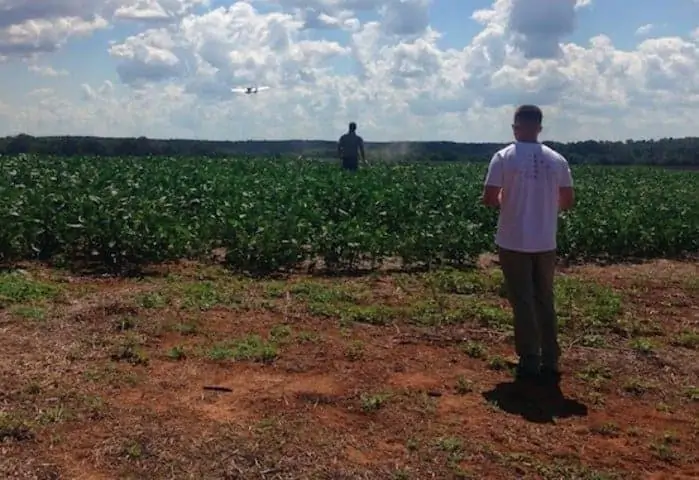PrecisionHawk has released its Phase 2 Pathfinder results as part of UAS TAAC (Unmanned Aircraft Systems Technical Analysis and Applications Center) in Santa Fe, New Mexico. The Pathfinder program is an FAA-led initiative to facilitate the early introduction of low-altitude operations for small unmanned aircraft systems (UAS) into the National Airspace System. The Phase 2 report identifies the operational risk associated with visual detection of an incoming aircraft and the ability to make a safety decision while operating a drone beyond visual line of sight (BVLOS). The report concludes that due to human variation, technology assist is critical to make the safety case for BVLOS flight.
“While we believed that technology would be useful for flying BVLOS, we needed a quantitative answer as to whether it would simply make the user’s life easier or it actually impacted the safety of the operation,” said Dr. Allison Ferguson, Director of Airspace Research at PrecisionHawk. “The FAA needs a clear understanding of the risks associated with advanced drone operations, and this testing sets a visual baseline to measure the level of safety as we add enabling technologies.”
Phase 2 testing took place in North Carolina and Kansas with a large group of both FAA-certified pilots and non-pilots who were asked to make decisions while flying a drone beyond line of sight. When a manned aircraft was introduced into the airspace, participants were asked to both detect the intruder and choose from a series of actions to avoid a potential collision. The research measured a wide variety of environmental and human factors that could impact both the detection and decision-making process including light, weather, visual obstructions, participant hearing and visual acuity. Participants were also asked a series of questions before, during and after the field operation to evaluate qualitative factors such as stress, boredom and fatigue.
Analysis of the collected data shows that pilots were generally able to detect an intruding aircraft from further away than a non-pilot. In contrast, the decision making process of both groups, as measured by their reaction times and collision avoidance choices, was nearly the same. In the majority of cases, the participants made a choice to lower the aircraft to loiter at its existing location as opposed to returning the drone home to either land or loiter.
“A key takeaway of Phase 2 is that there is always going to be variation when we rely exclusively on unassisted human ability to mitigate risk,” said Dr. Ferguson. “Situational awareness technology can help make that operation more consistent over more of the population, which in turn makes any risk prediction easier and more realistic.”
“It’s not about taking humans out of the loop. It’s about letting technology do what it is designed to do, freeing up humans to do what humans are good at, like flexible decision-making.”
PrecisionHawk’s Pathfinder Phase 1 report outlined the boundaries and conditions of Extended Visual Line of Sight (EVLOS) operations for a solo pilot in command. Phase 3 testing, which will evaluate technologies that can be used to enhance safety, including the LATAS drone safety platform, is set to begin in January 2017.



















